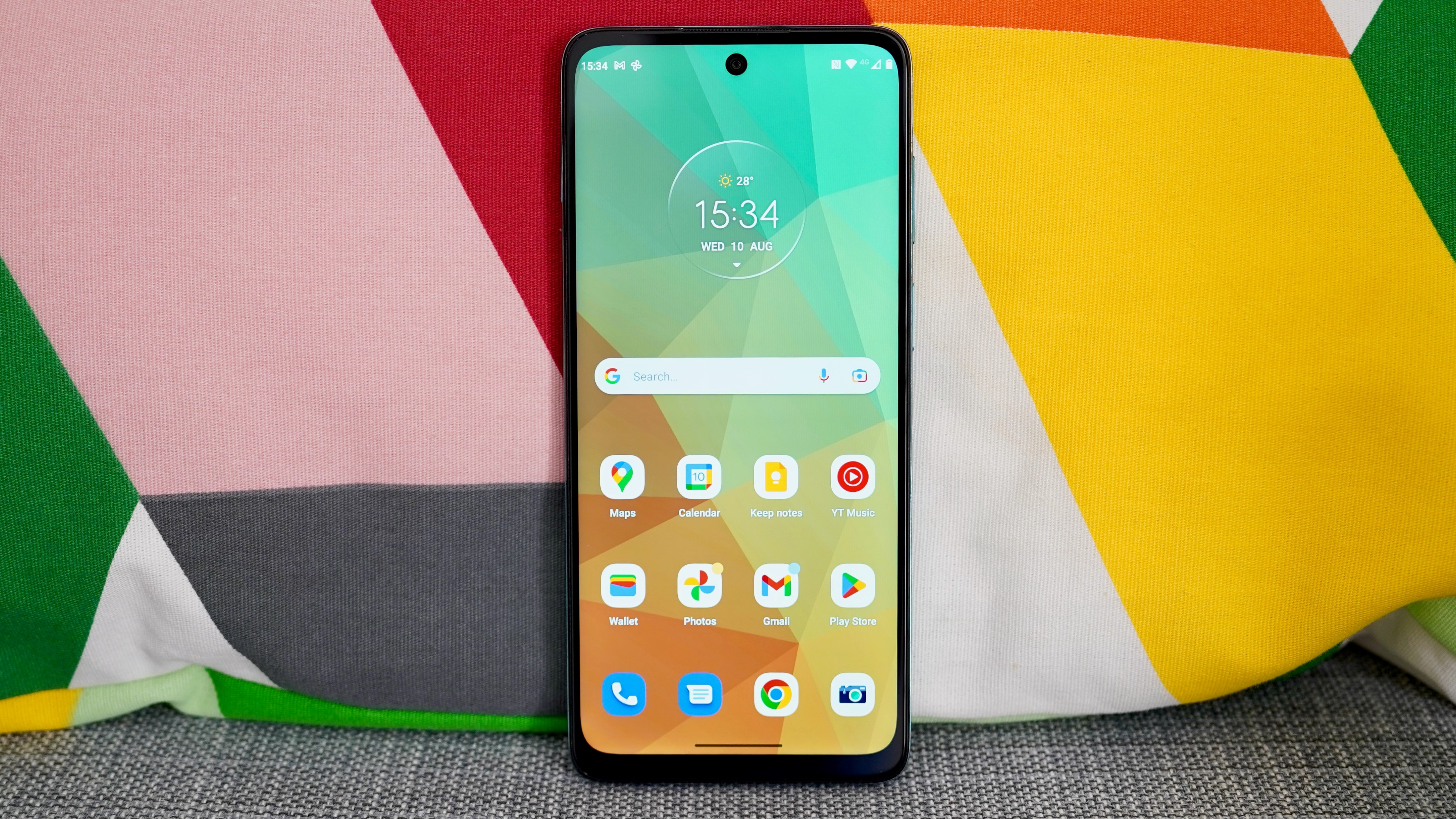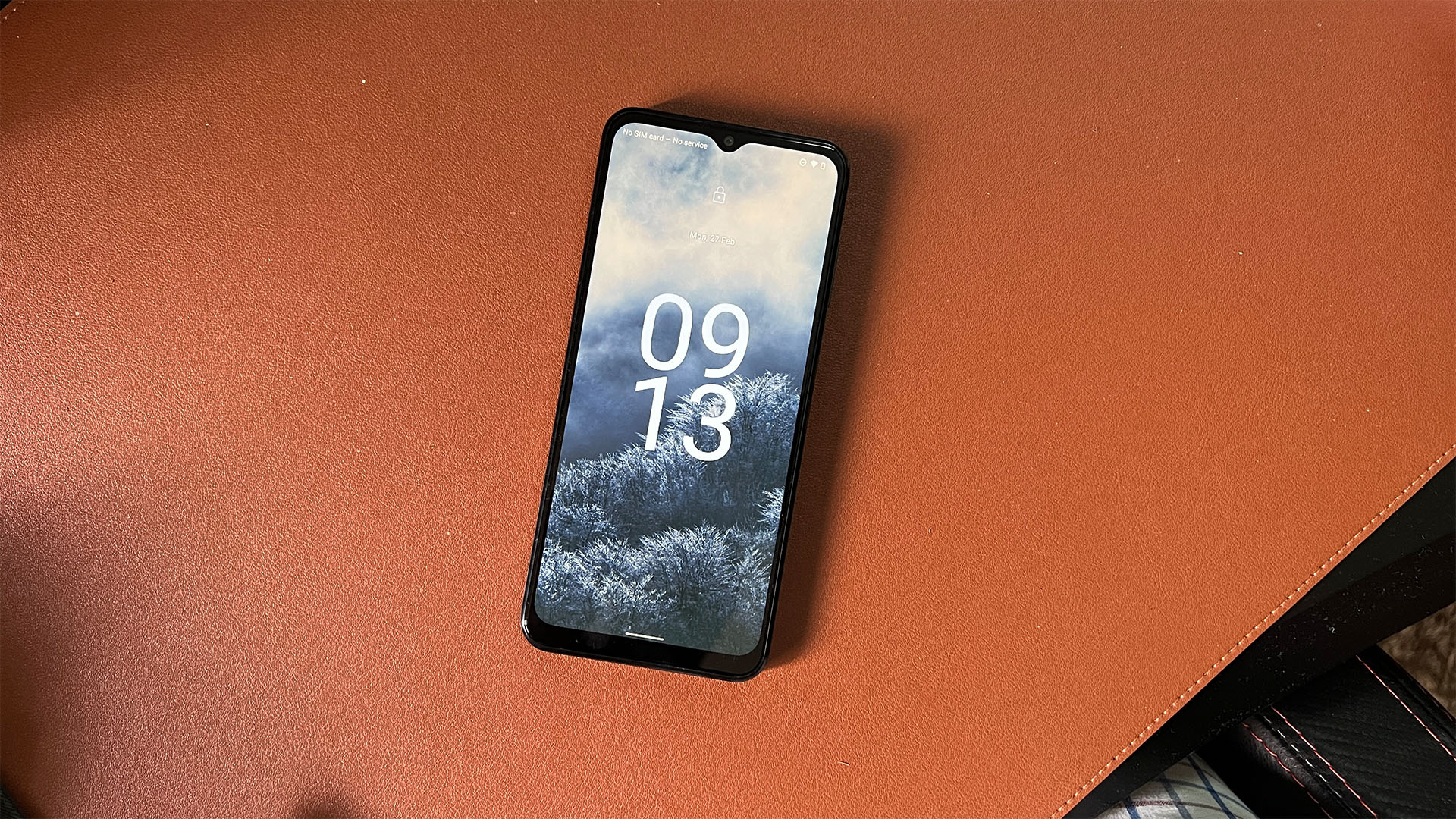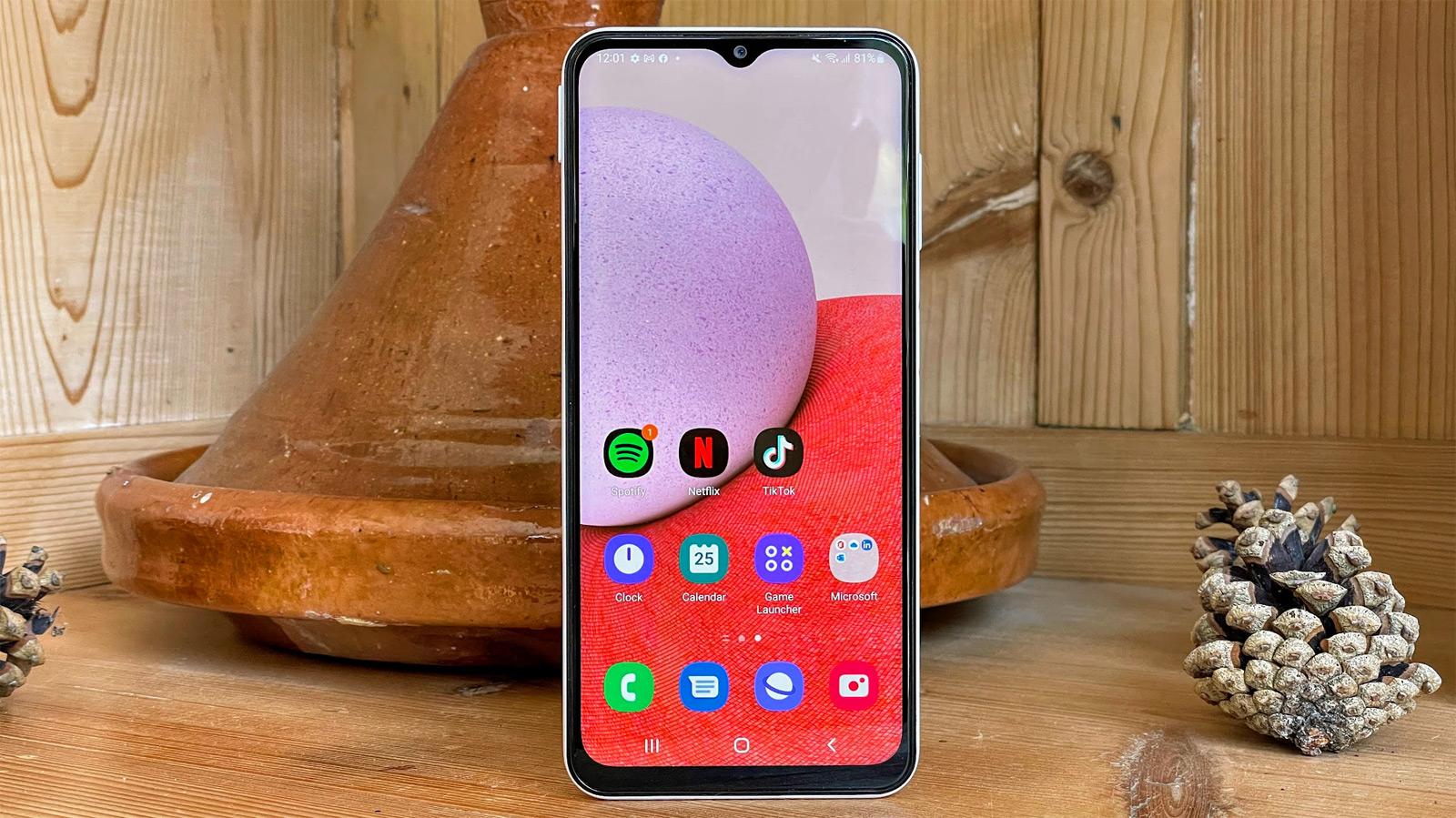Flagship phones are more expensive than ever but as the high-end gets better, so too does the budget market. It’s possible to buy a new handset under £250/$250 and still get a phone capable of handling everything you throw at it.
There’s even the odd handset here under £100/$100, which might be perfect if all you need is the ability to make and receive WhatsApp calls; currently not available on most basic feature/keypad phones.
The best budget phones are also more attractive in the long-term thanks to cheaper contract prices, though you might prefer to buy these smartphones outright and then pay only for your minutes, texts and data, if you can swing it.
This is also the area where most people in full-time education will be shopping. Whether you’re a parent looking for your child’s first smartphone, or looking for an upgrade before you leave for university or college, check out our student-specific buying advice below the chart.
If value-for-money is your number-one priority, you won’t find a more useful list of budget phones elsewhere. We’ve tested, rated and ranked the best cheap phones from the likes of Samsung, Xiaomi, Oppo, Motorola and many others. Alongside our reviews, you’ll also find expert buying advice to help decide whether a particular cheap phone really is the bargain it claims to be.
Best budget phone 2023
1. Motorola Moto G62 – Best overall

Pros
- Well built
- Clean Android 12
- Strong battery life
Cons
- Slow charging
- Laggy performance
- Average camera
Price When Reviewed:
€249.99
The cons of the Moto G62 are much the same as all cheap phones, because they are cheap! You save money by sacrificing performance, camera quality, and faster charging. What you gain with the Moto though is a solid plastic built quality that surpasses other phones at this price, a clean version of Android 12 with changes only made where Moto can improve, not add things for the sake of it.
This is one of the best budget phones you can get.
There’s a superb always-on display, despite having an LCD rather than OLED panel, that lets you quickly view and open notifications that no other phone brand has. If the performance occasionally stutters you will be able to forgive it for how attractive the software of this phone looks, and it’s a great alternative to Xiaomi’s cluttered UI, despite the strength of that brands budget phones.
Triple cameras on the back of the Moto G62 exist, but it’s a push to call them all good – thankfully the 50Mp main sensor is very solid and will give you excellent daytime shots. Pair that with great battery life from the 5000mAh cell that we sometimes found reached the end of the day at 50% and you have a great cheap phone option.
Read our full
Motorola Moto G62 review
2. Nokia G60 5G – A close second

Pros
- Large display
- Decent main camera
- Solid battery life
- Three years of OS support
Cons
- Mediocre secondary cameras
- 20W charging
Price When Reviewed:
249 €
It’s great to see the Nokia brand (the phones are actually made by Finnish company HMD) represent good value phones once more. The Nokia G60 is an excellent budget phone choice at £200 (it’s not officially on sale in the US but you can get it via Amazon).
With 5G, a large screen, great battery life and a perfectly capable main camera, the G60 ticks all our top boxes for a phone that doesn’t cost too much, considering. Three years of software support is also above average for this price segment. It’s good to see, and means you can use your phone knowing its Android security is up to date.
You can buy the phone outright or you can get it from £12.50 per month with Nokia’s Circular subscription plan, which lets you upgrade when you want, or lets you accumulate points the longer you hold onto the same phone to encourage less e-waste. You can then spend those points on eco-minded causes.
At this price it’s hard to fault the G60, though it does charge very slowly.
Read our full
Nokia G60 5G review
3. Realme C35 – Best design

Pros
- Crisp, colourful display
- Bold design
- Competent camera
Cons
- Basic performance
- Screen only 60Hz
- Battery life below rivals
Thhe folks at Realme pulled it out of the bag with the design of the C35, a sub-£150 phone that looks like it costs a lot more.
With flat sides taken straight from the latest iPhone playbook and a smart looking camera module akin to the more expensive OnePlus Nord phones, the C35 also packs in a great 1080p display for the incredibly cheap price.
You can even pay £20 extra to get 128GB storage instead of 64GB, and all models have a microSD slot and a 3.5mm headphone jack. The processor is nothing to write home about, but the 50Mp main camera lens is pretty good on a phone that outperforms its asking price.
Read our full
Realme C35 review
4. Xiaomi Redmi Note 10 Pro – Best camera

Pros
- Stunning display
- Incredible value
- Big battery
Cons
- No OIS
- MIUI not for everyone
Price When Reviewed:
Dès 299,90 €
The Redmi Note 10 Pro is essentially an upgraded Poco X3 NFC, with a nicer display and better camera.
The 6.67in 120Hz panel boasts AMOLED tech, meaning superb contrast and vibrant colours. The 108Mp lead camera, meanwhile, excels and comes accompanied by a pair of secondary snappers that exceed expectation.
Fun extras like 33W fast charging, a headphone jack and even an IR blaster elevate the Redmi Note 10 Pro from a good to a great budget offering, considering what Xiaomi’s incorporated here.
Read our full
Xiaomi Redmi Note 10 Pro review
5. Xiaomi Poco M4 Pro – Incredible value

Pros
- First M series w/ AMOLED
- Two-day battery life
- Excellent camera
Cons
- Thick and heavy
- MIUI is clunky
- Unreliable fingerprint scanner
Not to be confused with last year’s Poco M4 Pro 5G, this device shrugs off 5G in exchange for some notable upgrades in other areas.
The Poco M4 is the first M series device in Poco history to pack in an AMOLED display (which also happens to support a 90Hz refresh rate and Full HD+ resolution), the 64Mp is an impressive improvement for the series and battery life (as well as fast charging) is decent too.
The design is a little divisive and MIUI 13 for POCO won’t be to everyone’s tastes but in terms of value for money, this is an exceptional option, right now.
Read our full
Poco M4 Pro review
6. Xiaomi Poco M4 Pro 5G – Great for budget 5G

Pros
- 90Hz display
- Great battery life
- Affordable 5G
Cons
- Average cameras
- MIUI isn’t great
- Only 4GB RAM in base model
Price When Reviewed:
229,90 €
The updated Poco M4 Pro 5G offers a little more than its predecessor from the same year, without changing the overall balance struck, all that much.
This like-minded Xiaomi handset has a run-of-the-mill Dimensity 810 5G chipset but also delivers a high 90Hz refresh rate viewing experience.
Beyond that, a large 5000mAh battery with upgraded 33W fast charging delivers superb battery life and some eye-catching finishes make this a compelling fit for those after a touch more fluidity in their user experience.
Read our full
Xiaomi Poco M4 Pro 5G review
7. Xiaomi Redmi Note 11 – Great all-rounder

Pros
- Great display
- Brilliant battery life
- Value for money
Cons
- MIUI still iffy
- Lacklustre cameras
Price When Reviewed:
199,90 €
The Redmi Note 11 paints a similar picture to the Poco M4 Pro (4G) with a slightly hardware setup at play and a whole family and variants to move up through, should its humble hardware not cut the mustard.
In its own right though, the Redmi Note 11 offers great value for money, with a 90Hz Full HD+ AMOLED display, respectable performance from its Snapdragon 680 chipset and superb battery (with decent 33W fast charging).
Camera performance is the obvious weak point here but you’re still getting a lot for your money.
Read our full
Xiaomi Redmi Note 11 review
8. Xiaomi Redmi 10 – Very affordable

Pros
- 90Hz display
- Superb battery life
- Attractive design
Cons
- Middling display quality
- Average cameras
- Slow charging
Price When Reviewed:
199,90 €
The Redmi 10 isn’t the best budget phone around, but it’s pretty darn good, nonetheless. It looks great, runs decently fast, packs a 90Hz display and offers superb battery life on a budget.
The cameras could be better, charging a little faster and LCD a little more vibrant, but beyond that there’s not much to complain about, especially when the already affordable price tag frequently gets discounted by Xiaomi directly.
Read our full
Xiaomi Redmi 10 review
9. Nokia G22

Pros
- Unique repairable build
- Decent battery life
- User-friendly OS
Cons
- Slow and laggy performance
- Unimpressive screen
- Only two years of OS updates
Price When Reviewed:
199 €
If you like the idea of repairing your phone rather than replacing it every few years, the Nokia G22 could be the phone for you. If you can cope with the fact this is quite a slow phone – perhaps you only need one for basic functions like calls and messages and Google Maps – then it’s a good buy.
iFixit sells several official repair kits for the G22 including for screen cracks and new battery. It means you can grab a smartphone for £150 and be safe in the knowledge you can easily repair it yourself. It’s liberating, and Tech Advisor’s Hannah tried it out in our full review.
One thing to note is this phone will only have software support for two years, which somewhat contradicts the idea this is a product you should keep for far longer and replace its failing parts. That aside, this is an interesting concept and a budget phone you should consider if you don’t need a powerful device.
Read our full
Nokia G22 review
10. Samsung Galaxy A13 – Best software

Pros
- Understated design
- Decent main camera
- Long-term software support
Cons
- Poor performance
- No 5G
- Slow charging
Price When Reviewed:
199 €
Samsung’s budget Galaxy A13 can’t match similarly priced rivals when it comes to pure performance, but it makes up for it with Samsung’s winning OneUI Android skin, and a promise to receive two full Android version software updates and four years of security patches – giving this phone a longevity that few cheap handsets can match.
It looks slick too, with a simple, understated design that we prefer to many of the alternatives, and the camera’s pretty good too.
Still, other phones in this chart include faster processors and smoother displays, not to mention 5G support, so make sure you know what you’re giving up by sticking with Samsung.
Read our full
Samsung Galaxy A13 review
Your buying guide to the best budget phones in 2023
In our experience, the ideal way to get a cheap phone is to buy it SIM-free, then grab a great-value SIM-only deal. You won’t be paying loads every month for a phone for the next two years and you can swap it for a newer model whenever you fancy without a massive impact on your wallet. This is especially true for cheap Chinese phones, as they’re some of the most competitively-priced devices on the market.
All the phones here cost under $250/£250, which is a quarter of the price you’d often pay for most flagship phones. Take a look at our guide to the best phones on the market for more on those high-end offerings.
Here are what we consider to be the best cheap phones on sale right now. We’ve based this rundown on devices’ SIM-free pricing, as contracts change so frequently.
You can click through on a phone you’re interested in to read the full review, see example photos from the camera and check out benchmarking results.
Should you buy a locked phone?
You’ll quickly find that some of the best deals on cheap phones are sold via mobile operators (also known as carriers). What you need to watch out for is whether these phones are sold locked to that operator’s network.

In such situations, you won’t be able to put another operator’s SIM card into your carrier-locked handset and will likely have to call the device’s carrier to get the phone unlocked, which can cost money.
What’s the best phone for a child?
Most children want to make up their own mind about choosing a phone when it comes to entering young adulthood, but if they’re a little younger you’ll probably want to make the decision for them.
You’ll want to look at something ultra-affordable for a first smartphone (so you’ve come to the right place), it’ll need to have a decent-sized screen, long battery life and be fairly durable, so you should probably avoid phones with a glass back.
As it’ll likely be your main point of contact with your child, you’ll also want to look for good call quality, something that’s often overlooked on modern smartphones.
Which phone is best for students?
We’d recommend a more affordable phone here too, but many of the options in this chart may be within reach.
General buying decisions should be whether you prefer a near-stock version of Android (as is available on Google’s Pixel phones, Nokias and Motorola phones), or don’t mind a heavier skin, as found on devices from Samsung, Huawei, Oppo and so on.
Also, considering what the most important aspect of a phone is to you is key, and how many compromises you’re willing to make in other areas. Many handsets at this price point will target one specific feature, meaning corners are inevitably cut elsewhere.
What will you get for your money?
If you’re looking for a cheap phone, you have to accept the fact that the manufacturer is going to cut some corners to achieve that low price and you aren’t going to get the same performance, features or display quality as that of a phone costing two, three, or four times the price.
It used to be the case that budget phones were instantly recognisable by their low-resolution displays, meagre storage and chunky, plastic bodies, but things are improving in this area all the time. These days, for £250/$250 or less, it’s quite possible to buy a phone with a Full HD display, a slim body, and a camera that takes pictures you might actually want to share.
Most will support 4G (or even 5G) connectivity but features like NFC, wireless charging and water resistance might be absent, unless specifically stated.
Budget smartphones, Smartphones
Aucune réponse